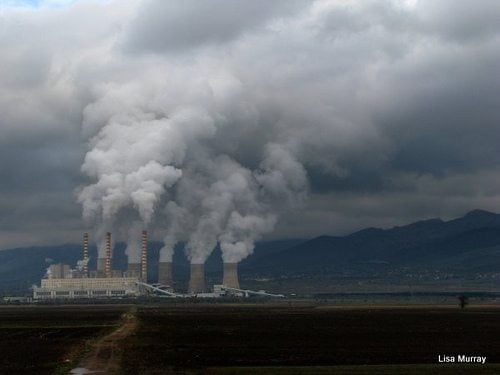

Environment
Climate change pushes doomsday clock closer to midnight
Climate change and nuclear proliferation have led to scientist deciding to move the symbolic doomsday clock closer to midnight signalling growing threats to humanity and the earth. The clock now reads three minutes to midnight.
The doomsday clock was created in 1947 by the Bulletin of the Atomic Scientists to use imagery to convey threats to humanity and the planet. The decision to move the minute hand, or leave it where it is, is made every year. The last move in 2012, when the hand was moved by one minute to five minutes to midnight, was also due to climate change.
In a statement, the Bulletin of the Atomic Scientists say, ”In 2014, unchecked climate change, global nuclear weapons modernisations, and outsized nuclear weapons arsenals pose extraordinary and undeniable threats to the continued existence of humanity, and world leaders have failed to act with the speed or on the scale required to protect citizens from potential catastrophe. These failures in political leadership endanger every person on Earth.”
The Bulletin argues that despite some “modestly positive developments in the climate change arena”, such as the advancement of renewable energy technologies, current efforts are “entirely insufficient” to prevent dangerous levels of climate change.
The group urges policymakers to take coordinated, quick action to reduce greenhouse gas emissions and shrink nuclear weapons arsenals, which it also argues poses a serious threat to humanity. The scientists called on citizens from across the world to demand action from their leaders.
The Bulletin notes that 2014 was the hottest year since record began and that last year’s Intergovernmental Panel on Climate Change (IPCC) report suggested climate change is already responsible for widespread damage, warning that if emissions are unchecked temperatures could increase by 3-8C by the end of the century, above the internationally agreed limit of 2C.
“The IPCC has made it clear that a climate catastrophe is not inevitable. The world has technological and policy options available at entirely acceptable costs. Time is short, but it has not yet run out. Our leaders and our institutions of global cooperation and governance can yet rise to the challenge, But rise they must, and quickly,” the Bulletin commented.
The organisation added, “The probability of global catastrophe is very high, and the actions needed to reduce risks of disaster must be taken very soon.”
Photo: Lisa Murray via Flickr
Further reading:
Lord Stern: delaying climate action is ‘dangerous’
Plan to use financial markets to prevent climate change ‘a dangerous distraction’
Global boardrooms increasingly aware of climate change threat
Study: majority of fossil fuel reserves must remain unburnt
Shell and BP face investor calls for transparency on climate change risks


 Environment10 months ago
Environment10 months agoAre Polymer Banknotes: an Eco-Friendly Trend or a Groundswell?

 Environment11 months ago
Environment11 months agoEco-Friendly Home Improvements: Top 7 Upgrades for 2025

 Features9 months ago
Features9 months agoEco-Friendly Cryptocurrencies: Sustainable Investment Choices

 Features10 months ago
Features10 months agoEco-Friendly Crypto Traders Must Find the Right Exchange





























